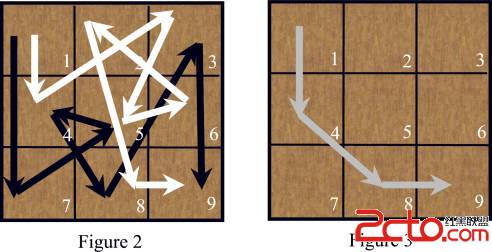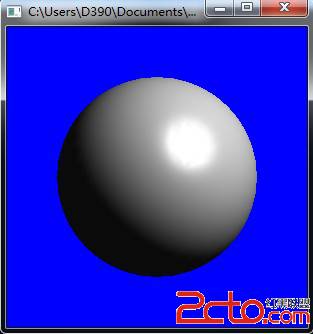打印螺旋序列
题目:给定一个数N(N = M^2 - 1)输出0、1、……、N的螺旋序列,其中M为正整数。
例如M为5时,输出如下序列。
0 1 2 3 4
15 16 17 18 5
14 23 24 19 6
13 22 21 20 7
12 11 10 9 8
解法:考虑设定一个(M + 2)^2大小的二维数组,边界部分赋值为-1,便于打印的时候识别边界,中间部分螺旋赋值。代码如下。
[cpp]
#include <iostream>
#define MAX_BASE 100
using namespace std;
void fill_and_print(int _base)
{
int total = _base * _base;
int tofill[MAX_BASE + 2][MAX_BASE + 2];
memset(tofill, 0, sizeof(int) * (MAX_BASE + 2) * (MAX_BASE + 2));
tofill[0][0] = tofill[0][_base + 1] = tofill[_base + 1][0] = tofill[_base + 1][_base + 1] = -1;
for(int countBase = 0; countBase < _base; ++countBase)
{
tofill[0][countBase + 1] = -1;
tofill[_base + 1][countBase + 1] = -1;
tofill[countBase + 1][0] = -1;
tofill[countBase + 1][_base + 1] = -1;
}
int direction = 0; // 0 means right, 1 means down, 2 means left, 3 means up
int initColumn = 1;
int initRow = 2;
tofill[1][1] = -1;
for(int count = 1; count < total; ++count)
{
switch(direction)
{
case 0:
if(tofill[initColumn][initRow + 1] != 0)
{
tofill[initColumn++][initRow] = count;
direction = 1;
}
else
{
tofill[initColumn][initRow++] = count;
}
break;
case 1:
if(tofill[initColumn + 1][initRow] != 0)
{
tofill[initColumn][initRow--] = count;
direction = 2;
}
else
{
tofill[initColumn++][initRow] = count;
}
break;
case 2:
if(tofill[initColumn][initRow - 1] != 0)
{
tofill[initColumn--][initRow] = count;
direction = 3;
}
else
{
tofill[initColumn][initRow--] = count;
}
break;
case 3:
if(tofill[initColumn - 1][initRow] != 0)
{
tofill[initColumn][initRow++] = count;
direction = 0;
}
else
{
tofill[initColumn--][initRow] = count;
}
break;
default:
break;
}
}
tofill[1][1] = 0;
// pr
补充:软件开发 , C++ ,




